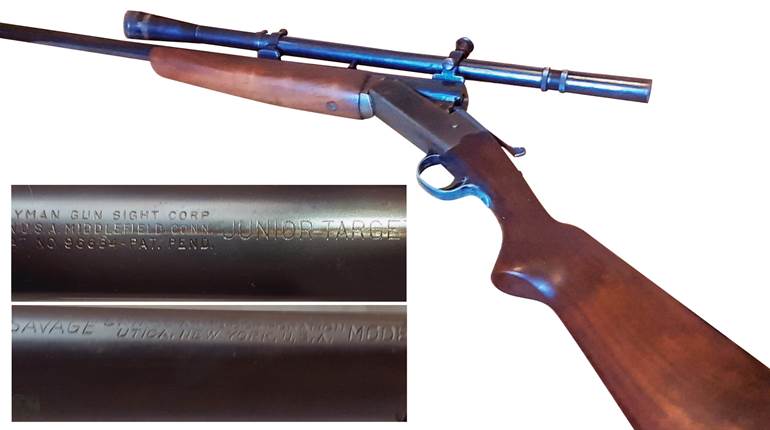
This "Rifleman Q&A: Webley-Pryse Revolvers," appeared originally in the November 1973 issue of American Rifleman. To subscribe to the magazine, visit the NRA membership page and select American Rifleman as your member magazine.
Q. I have an old English Webley revolver identified as the Webley-Pryse, introduced in 1877. It has twin locking bolts operated by opposing finger levers behind the cylinder, and a thumbscrew on the left forward side of the frame which locks the cylinder in place. On the left side of the barrel hinge appears the Webley winged hollow-base bullet motif with the letters W&S beneath.
Ugly as this gun is, I am amazed at its fine handling qualities, very smooth action, and quality of manufacture.
Is this a military arm? Arrows on the thumbscrew and the barrel flat above seem to be only indicators of correct assembly, rather than the "broad arrow" of British government ownership. What is the collector value of the piece?
A. Your revolver is Webley & Scott’s No. 4 of 1876. Many of these were marked on the barrel rib "Pryse's British Army Revolver (Patented)." It was made under British Patent 4421, lodged Nov. 15, 1876, by Charles Pryse the Younger, a gunmaker of Aston, near Birmingham, England. Despite that marking it was never an official military arm; as you state, the arrows are an assembly indicator and not a symbol of government ownership.
Characteristic features of these Pryse revolvers are the double bolting and cylinder dismount arrangement mentioned, and the rebounding hammer. Other minor features appear on various models.
The Webley Story, a comprehensive work by William Chipchase Dowell, lists some Pryse revolvers sold under various names but believed to have been made by Webley. These were Pryse himself; Henry Wilkinson & Son, 27 Pall Mall, London; and John Rigby & Co. of Dublin and 72 St. James Street, London. It is known also that some were by European makers, including Auguste Francotte & Cie. of Liege. Belgium.
Some persons have advocated shooting .45 ACP ammunition in these revolvers, held in place in the chambers by Smith & Wesson half-moon clips thinned slightly to allow the cylinder to close. This is a very wrong and dangerous procedure. The gun was designed to use the old British .450 Mk. I and II revolver cartridges, issued about 1868 and loaded with 13 grains blackpowder and a 225-grain soft-lead bullet; or the .455 Mk. I and II of about 1875, loaded with 18 grains blackpowder and a 265-grain soft-lead bullet. The .45 ACP fires a 230-grain hard-jacketed bullet at 830 f.p.s., with a charge of fast-burning smokeless powder. That is a severe overload for this revolver, even without taking into account bullet diameter differences. Incidentally, the discussion above indicates your revolver is not chambered for the .455 Webley auto pistol cartridge either.
The quality of these Webley-Pryse revolvers is equal if not superior to any made in this country, as you note. — Charles R. Suydam






































